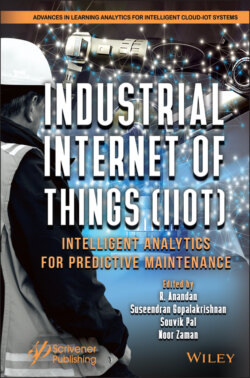Читать книгу Industrial Internet of Things (IIoT) - Группа авторов - Страница 22
1.6 Conclusions
ОглавлениеIoT refers to the network of intelligent devices that are concerned with issues of connectivity, competition, and protocols, among other aspects. Relating the respective AI to the branch of cognitive computing caring for principles of data analysis, statistics, and other aspects. Considering that when applied together, it brings results related to the data generated by the IoT and can be processed by an AI software, which will optimize decision-making and contribute to the increase in the agility of the processes.
From the historical point of view, objects (things), people, and even nature, emitted a huge amount of data; however, humanity just could not to perceive, i.e., see, hear, or make sense of them. However, through the IoT and the data collected, humanity began to see, understand, and use it to its advantage with technological advances in practically all sectors of society. It is in this aspect that the IoT came to change the reality of the contemporary and modern world, considering that everything around the environment has intelligence and is interconnected, so that through this technology, it is possible to have access to data, or better, information. Having access to this sea of data, which through the technological potential brought by AI is able to put digital intelligence and transform them into information, i.e., knowledge, and finally, into wisdom.
Starting from the premise that it is possible to perceive the patterns of all these data, society will become more efficient, effective, increasing productivity, enhancing the quality of life of people, and the planet itself. Reflecting on the possibility of generating new insights, new activities promoting even more technological innovation. In this respect, the bridge between data collection (information) and the suitable sharing of that data, with safety and protection digital for all parties, abides the key in technological evolution.
Reflecting on the industrial sector, it is possible to identify a behavioral trend and anticipate the application of a new idea, and this premise shows that the world is heading toward the Fourth Industrial Revolution. This represents the introduction of information technology in industries, correlating a hidden potential that is the use of data, since the good use of this data increases operational efficiency, better decision-making, and even creates new business models.
Finally, IIoT brings together different technologies correlating the Information Technology (IT) initiative for resource management, planning, and decision support systems, Operations Technology (TO) that monitors, analyzes, and controls field equipment, manufacturing, and production procedure, through AI. One of the applications of this is predictive analysis, which makes it possible to forecast a given situation in the future based on information from the past and probability. From this, it is possible to get an AI to perform a certain action corresponding to a specific sensor in the IoT network indicating a specific state of the shop floor, optimizing this activity with increased precision.
Still reflecting on the digitization of processes and the entire production chain of the industry, it is the basis of Industry 4.0, with the layers of IoT and IIoT enabling the planning, control, and even tracking of production, both by digital simulation and virtualization, winning decision-making time and cost reduction. Thus, AI and IoT are tools that drive business and guarantee a competitive advantage with the possibility of generating automated and more agile services, consequently impacting the final consumer.
